Gladioli in pots: varieties, planting and care
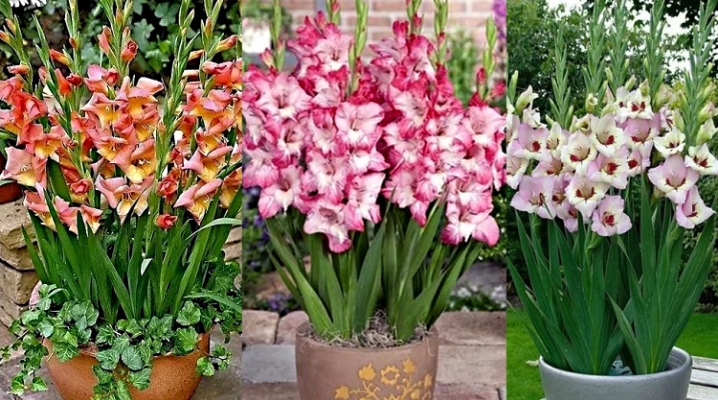
Gladioli are graceful and very showy flowers. Many decorate their garden plots with them. However, if desired, the culture can also be grown at home in a pot. The main thing is to choose the right variety and adhere to the simple rules of planting and caring for the plant. The article will tell you about the features of such a breeding of gladioli.
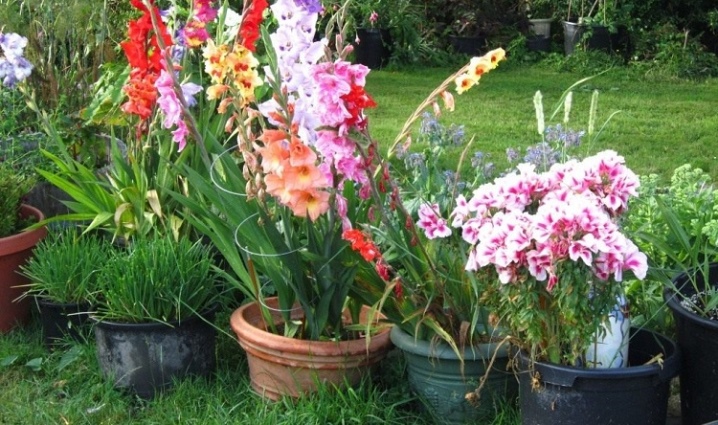
general description
Gladiolus is a perennial bulbous culture. It belongs to the iris family. There are several thousand varieties of gladioli. The variety of shapes and beautiful colors is simply amazing. Despite the fact that the flowers are very decorative, they grow well in the wild. They can be found in Asia, South Africa, in some European countries.
Flowers are usually tall (can grow up to 1.5 m). The stem of the plant is smooth, erect. The leaves are elongated, rather large (up to 80 cm). The main decoration of culture is flowers. Funnel-shaped buds gather in spike-shaped inflorescences. Each includes 6 petals. The colors are different. Flowers can be white, bright or pale pink, crimson, coral, yellow, purple, burgundy. There are varieties with bicolor petals.
Gladioli feel great outdoors in the Russian climate, therefore, they can often be seen in summer cottages. But even in pots, they grow remarkably. A distinctive feature of the culture is a long flowering period. Therefore, it is perfect for decorating balconies, verandas, private houses and apartments.
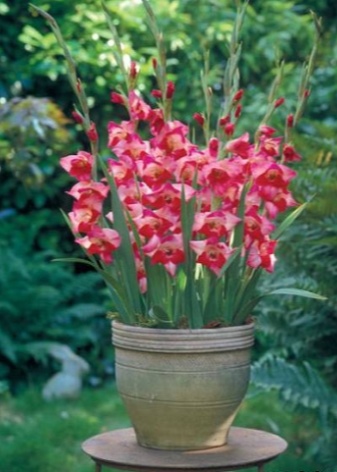
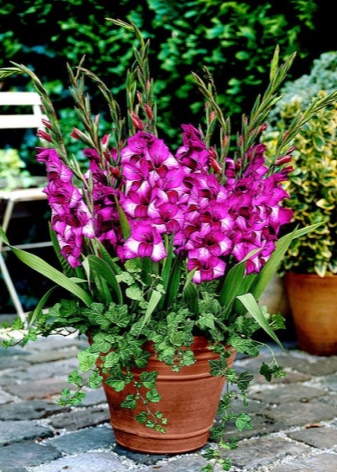
Overview of species and varieties
The culture has a long, powerful root. In addition, it is growing rapidly. Because of these nuances, not all varieties can be grown in containers. For planting in a pot, a gladiolus no higher than 60 cm is considered ideal. Consider popular compact varieties suitable for home growing.
- Tinkerbell. This beautiful variety with double petals has an unusual color. The yellow flowers are framed by a bright orange border, making any gloomy day more fun. Plant height varies from 50 to 70 cm.

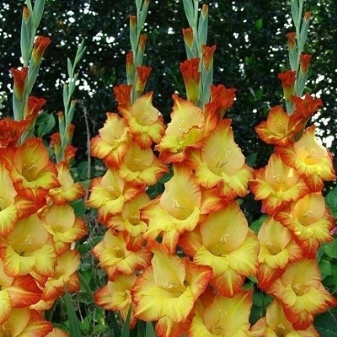
- Georgette. Another "sunny" variety. The flowers are yellow-red in color. The variety is equally good for potting and planting. The growth of the culture is medium (up to 70 cm).
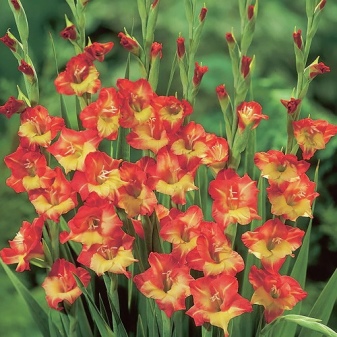

- "Moscow white stone". This snow-white spectacular hybrid grows up to 60 cm. The petals are corrugated, which is why the plant resembles a light fluffy cloud. The flowering is lush and very "elegant", because about 35-40 buds are formed on one stem.
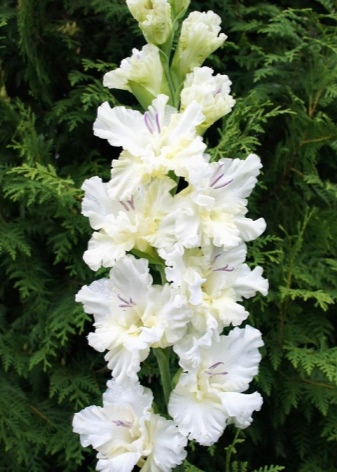

- White City. As the name implies, this variety also has a white color. However, unlike the previous one, its flowers are not double, but ordinary. However, this does not detract from the beauty of the elegant plants with delicate buds that stand out expressively against the background of green foliage.
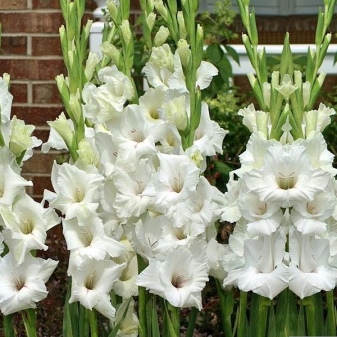
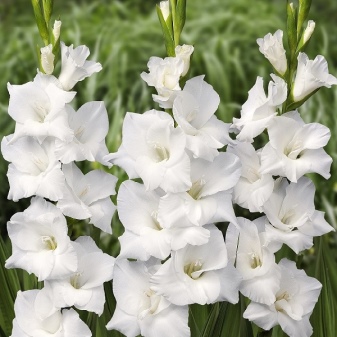
- Bow Peep. Usually the plants of this variety are small. However, sometimes they grow up to 70 cm. Terry petals. The colors are soft apricot.
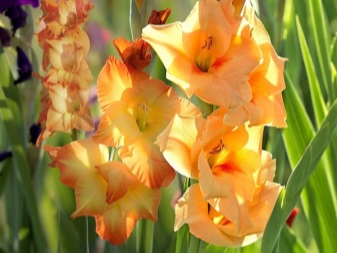
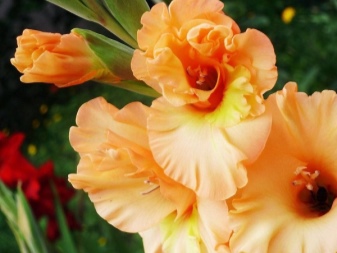
Suitable growing conditions
Site and lighting
It is better to choose a place that is well lit. However, the sun's rays should not be directed directly at the flower. Better that the light is diffused. It is also important that the plant is exposed to light for 12 hours daily. In winter, it is better to use lamps to maintain the regime. In the cold season, the flower is kept indoors, and in the summer it is often taken out into the garden or on an open balcony.
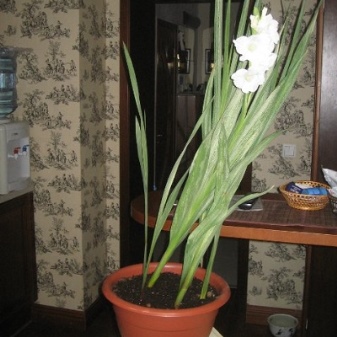

Temperature regime
The optimum temperature for the culture is considered to be about 20 degrees Celsius. The plant must be protected from drafts during the cold period.... At the same time, it is not worth keeping it in the heat either.
In the summer, be sure to turn on the air conditioner or regularly ventilate the room (if the gladiolus remains in the house).
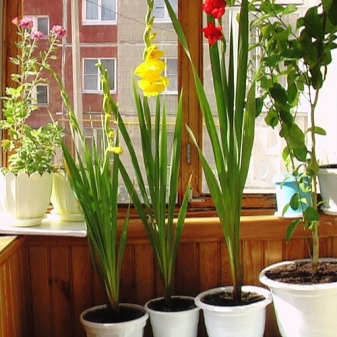
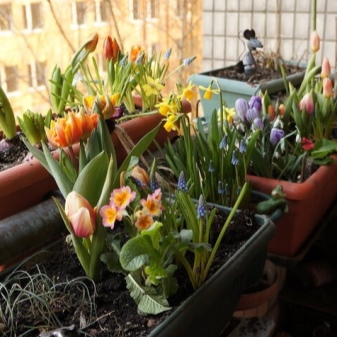
Priming
The soil in the container should be loose and fertile. During the period of rapid growth and formation of buds gladioli require nutrients.
A good solution would be to buy a ready-made composition suitable for flowering crops.
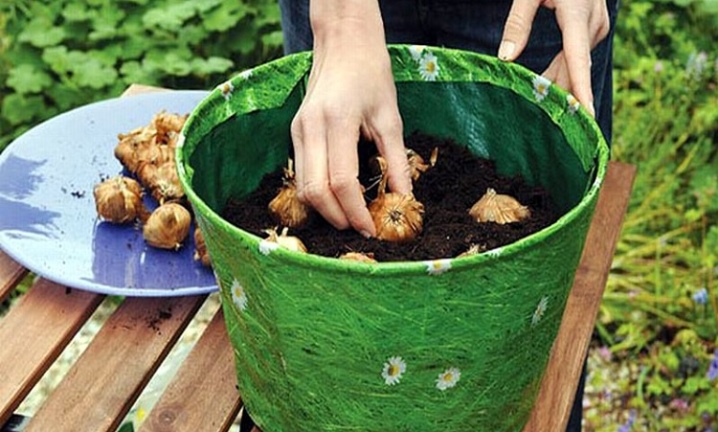
Pot
The choice of container for planting should also be given a lot of attention. The material can be anything. Flowers grow well in ceramic, plastic and clay pots. But the size of the container matters.
Even dwarf varieties are quite massive. Therefore, containers less than 7 liters are not even worth considering. The minimum diameter of the pot is 30 cm. As for the depth, the acceptable minimum here is 40 cm. Of course, the deeper the container is, the better it will be for the flower.
Some growers plant several plants in one pot at once. This allows for a lush and effective composition. In this case, the container should be even larger.
Drainage must not be forgotten either. Stagnation of moisture at the root system of the flower is unacceptable. Therefore, it is advisable to make small holes in the pot. In order not to stain the floor, a tray is placed under the container with the gladiolus, into which excess water flows.
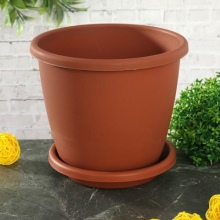
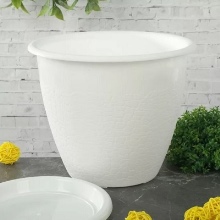

Landing rules
The choice of planting material
As already mentioned, the plant should be short, medium- or small-flowered. Also, when buying, you should carefully examine the corm. The planting material must be healthy. Rotten and weak specimens are not suitable for planting. There should be no suspicious stains, excessive dryness.
The optimal tuber size is 3-4 cm.


Preparation
The bulbs must be prepared before planting. First, you should remove dry scales. This is necessary in order to make sure that there are no signs of bacterial diseases hidden under them.
After that, the bulbs are disinfected. Treatment with a fungicidal preparation gives future plants immunity to various fungi. The most commonly used "Cytovit". The planting material is soaked in it for 10-12 hours. You can hold the bulbs for 10 minutes in a 3% solution of "Karbofos" or "Fufanon" (after this treatment, they are washed and dried).
Preparation begins in advance (2 or 3 weeks in advance). After disinfection, the planting material is folded into paper bags and placed in a cool place. When the time for planting comes, the first sprouts can already be seen on healthy specimens. Any bulbs that will not sprout can be thrown away. Nothing will grow out of them anyway.
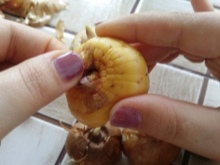
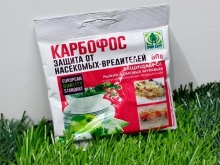
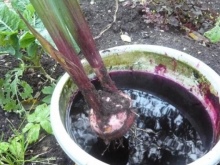
Timing and process
The best solution is to plant flowers in the spring, despite the fact that they will grow indoors. This is usually done from March to mid-May.
A drain is placed at the bottom of the container. You can use gravel, expanded clay. Broken ceramics will do as well. Like drainage holes, drainage helps protect the roots of the plant from excess moisture. Prepared soil is laid on top. Watering is carried out. The bulb is buried 10-12 cm.If several flowers are planted in one container, a distance between the specimens of about 6 cm is observed.
After planting, sprinkle the bulbs with a small layer of soil. The soil is compacted. The container is placed in a suitable place (no drafts and with good lighting). Earlier it was said that in the summer you can take pots of flowers into the garden. However, this does not apply to the germination period.
At an early stage of development, the culture should be protected from rainwater.


Care features
Watering
Gladioli grown in pots require more frequent watering than those grown on the site.It is recommended to moisten the soil 3 times a week. If the summer is hot and the air is very dry, you can increase the number of procedures to 4.
When watering, it is important to ensure that the moisture does not touch the leaves and petals. Otherwise, there will be a risk of plant rotting. When it comes to water quality, it matters a lot.
Use only soft, settled water at room temperature.
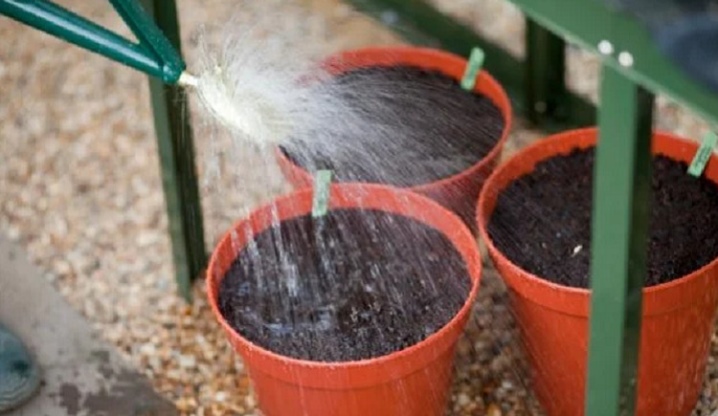
Top dressing
Fertilizers help the crop grow well and ensure lush bloom. For the first time, a flower in a pot is fed after the appearance of the first leaf. It is recommended to use nitrogen-potash formulations. When the fourth leaf appears, the plant is fertilized a second time. Here again potassium with nitrogen is used, but a little bit of boric acid is added. The formation of the sixth leaf is a signal for the need for a third feeding. This time 10 g of nitrogen and 15 g of potassium are added.
When a culture is blooming, complex formulations sold in stores can help it. After flowering, gladiolus is delighted with phosphorus and potassium. These elements help the bulb to regain strength. Among other things Growth stimulants are used 2 times per season... Usually it is "Epin" or "Zircon".
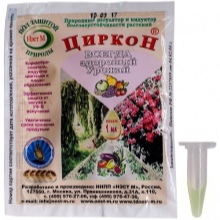
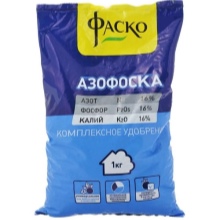
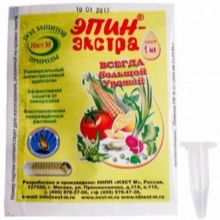
Soil treatment
Loosening is a mandatory procedure. It is carried out after watering, but not immediately, but after a while, so that the soil has time to dry out slightly. This helps to improve the flow of oxygen to the plant's root system.
To prevent moisture from quickly evaporating from the surface of the soil on hot days, you can use mulch. Peat and humus are good in its quality. In addition to retaining moisture, they additionally nourish the culture.

Garter
Even dwarf varieties sometimes need support. This usually happens if the crop is growing in a shaded area. From a lack of light, the stems become weak and brittle. You need to tie a flower carefully and carefully. Do not pinch the stems.

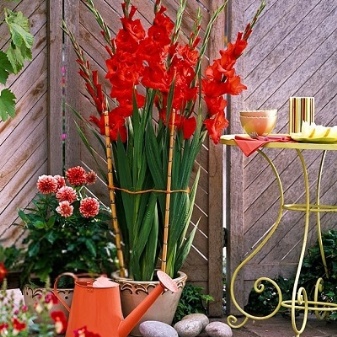
Pruning
Pruning is not carried out immediately after flowering. You need to give the plant some time to recover. If you hurry, you will not receive planting material for next year. When the green mass dries by itself, you can start the process. At the same time, about 6-10 cm are left from the aerial part of the flower.

Wintering
After pruning, the container with the onion is placed in a dark, cool place. In the fall, the tubers are taken out of the soil and their condition is checked. If there is minor damage or at least doubts about their health, disinfection and fungicidal treatment are carried out. Then the bulbs are dried and placed in cardboard boxes. After that, they are removed to a cold place. The basement can be used. A refrigerator will do too. There the planting material lies all winter.
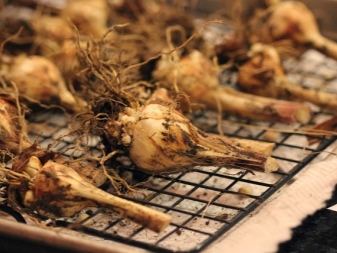
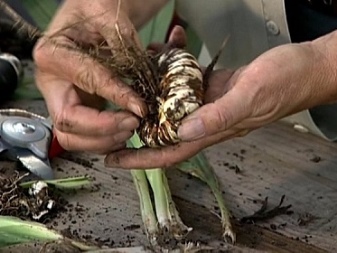
Reproduction methods
Seeds
This method is rarely used by ordinary florists. The process is long, brings a lot of trouble, and the result often does not coincide with what was expected. Usually, seed propagation of gladioli is used by breeders to obtain new varieties of gladioli. The fact is that a new plant can be very different from the mother in both color and size. but if you still want to try, take seeds from solid colors... In such cases, the chances of success increase.
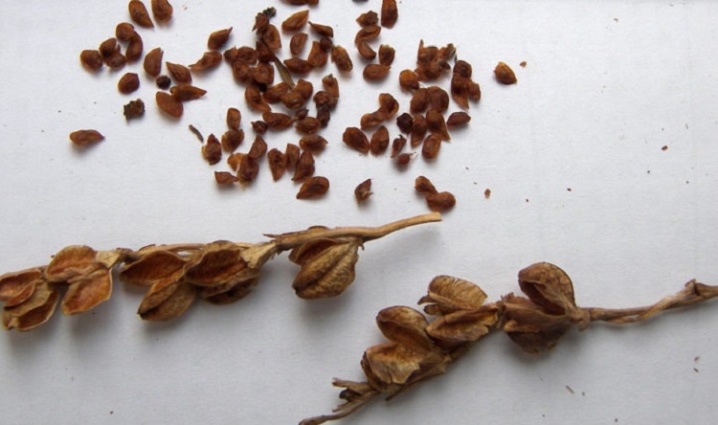
Tubercuffs
They are also called babies. These are thickened scales found on the stem. From one plant, you can collect from 10 to 100 pieces. The optimum diameter of the planting material is 1 cm. If there is a lack of size, you can immerse the tubers in the nutrient soil for a while.
Planting is done in spring. First, the children are placed in a common container. The container is covered with foil, creating a greenhouse environment. Periodically, future flowers are ventilated and moisturized. A month later, young plants are placed in separate pots. Flowering can be expected towards the end of the season.
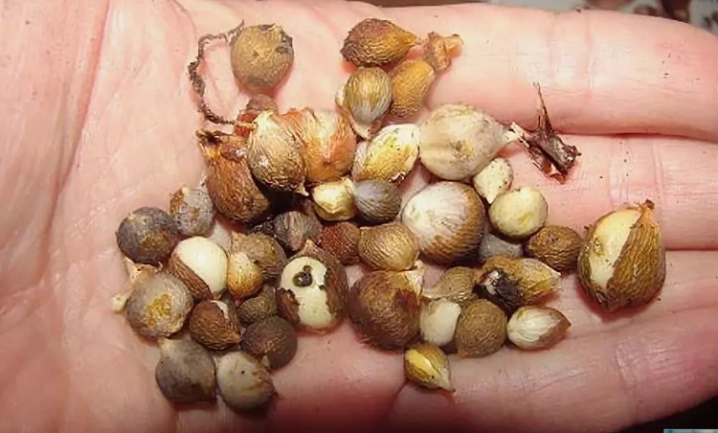
Corms
This method is considered the most popular and effective. The corm is located on the 2nd tier of the root system of the plant. If it is large, you can even split it into parts.Thus, you will receive several new gladioli at once. In this case, all the characteristics of the mother plant will be preserved.
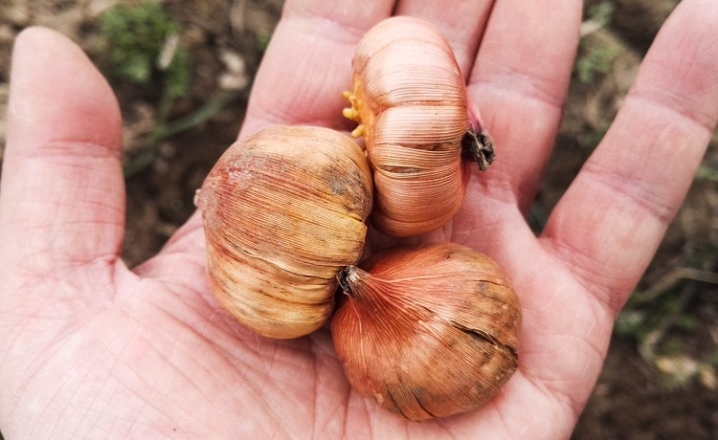
Diseases and pests
A flower grown in a container can be twitched with the same hazards as a gladiolus growing in an area. Although, of course, in closed rooms, troubles happen less often.
If gladiolus does not bloom, you need to look for the reason. Most often this is due to improper agricultural technology (waterlogging or overdrying of the soil, lack of fertilizers, ignoring the loosening procedure). May affect flower formation and disease.
The flower can undergo a fungal infection or a viral disease. In the second case, the plant is immediately destroyed. Fungal diseases are treated with appropriate drugs. For example, a solution of "Fundazol" is used both for prophylaxis and for solving an already existing problem.
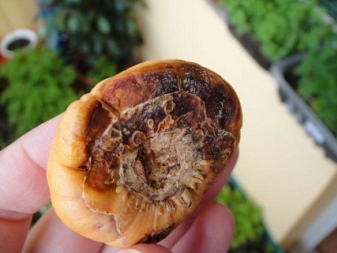
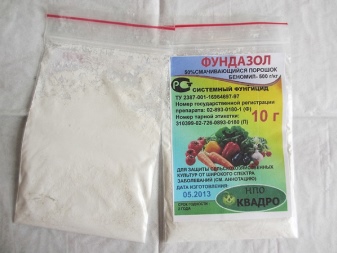
Of the pests, spider mites, aphids, and thrips are especially dangerous. The fight against them is carried out with insecticides (Karbofos, Aktellik, Aktara). It is also desirable to carry out preventive spraying.
Dusting the potted soil with tobacco chips or dry mustard will be helpful.
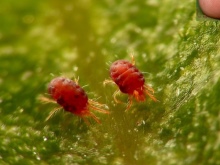
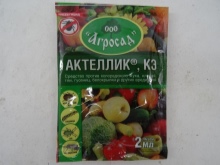

You can learn how to prepare gladioli bulbs for planting by watching the video below.







































































































I have never grown gladioli in pots. The article interested me. I will definitely try. Thanks.
The comment was sent successfully.